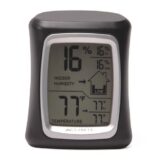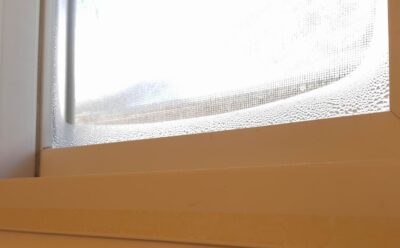 Cracked wood furniture, dry skin, static electricity shocks, a chilly feeling: They’re all irritating by-products of low humidity in your home when winter sends the thermometer plunging. Fortunately, there are lots of ways to raise the humidity in your home, making it a more comfortable space for people, pets and even indoor plants.
Cracked wood furniture, dry skin, static electricity shocks, a chilly feeling: They’re all irritating by-products of low humidity in your home when winter sends the thermometer plunging. Fortunately, there are lots of ways to raise the humidity in your home, making it a more comfortable space for people, pets and even indoor plants.
Why homes get dry
Cold air holds less moisture than warm air, and that cold air seeps into your home when you open an exterior door, through poorly insulated walls, and via gaps around doors and windows.
When the air is warmed by your heating system, it expands just like a tight jar lid held under hot running water. That means the amount of moisture in the expanded, warmed air is actually less than when the air was cold.
An indoor humidity level of 30 to about 55 per cent in the winter is optimal for good air quality, according to Health Canada. Drop below 30 per cent, and you get a shock every time you kiss your partner’s lips. Above 55 per cent and you risk condensation on your windows and mould growth in your home. 
Many residential thermostats have a built-in humidistat to measure and control humidity levels. If you don’t have a humidstat, pick up a hygrometer that measures both humidity and temperature — they start at less than $30 at building material and hardware stores.
MORE: Solving window condensation
Humidifiers, HRVs/ERVs & low humidity in your home
If your heating system has a built-in humidifier, which moistens air as it moves from the furnace into your home, you need to maintain it as part of your overall heating system maintenance. Your owner’s manual will tell you how to clean your unit, including de-scaling the water reservoir and ensuring the water level is correct, replacing the filter or pad, and other procedures.
If you don’t have the manual, an online search by make and model will generally take you to a digital version.
Need more information on where the furnace humidifier is located and how it works? Check this video:
You can also buy room humidifiers at Canadian Tire and elsewhere starting at well under $100. If you’re considering a room humidifier, start with Consumer Reports’ advice on buying one, including their top-rated units.
MORE: Indoor air quality tips
HRVs and ERVs are also helpful in controlling low humidity in your home. Both of these heating system add-ons improve indoor air quality by exchanging stale air for warmed, fresh air from outside.
While an HRV will help reduce indoor humidity during the summer, it won’t add moisture to a dry home. An ERV can raise the humidity by taking moisture from the stale air it’s expelling and adding it to the incoming fresh air.
More tips on low humidity in your home
Old-school, low-tech strategies can also solve low humidity in your home. That will make your home more comfortable in the winter, reduce heating costs because it takes less energy to heat moist air than dry air, and help stop your wood furniture and accessories from drying out.
- Invest in a folding drying rack and let your laundry dry overnight in a bedroom or hallway. The racks start at under $35 and not only add moisture to the air but save the wear, tear and energy costs of running a dryer.
- After a bath, leave the water in the tub until it’s cooled so it can add moisture to the air. Don’t leave an unattended tub if there are small children around.
- Put bowls of water on floor heating grates or non-electric radiators. The evaporation works helps to combat low humidity in your home.
- Leave your dishwasher door open a bit after the rinse cycle so the dishes can air dry, releasing moisture into your kitchen.
- Add indoor plants, which release moisture through transpiration. Studies, including this one, have shown ivy, jade and spider plants are among those releasing the most moisture.
- When the weather warms up, check the caulking around your doors and windows to ensure air flow is blocked. Caulking is an easy DIY job.
Got a maintenance task you’re not sure how to do?
Drop us a line at info@allthingshome.ca or message us through Facebook.










